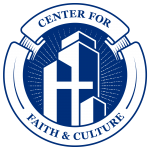What is culture, and how should Christians relate to it? In this video, Dr. Keith Whitfield sits down with Dr. Bruce Ashford to address this question. They talk about movies, whether culture is good or bad, and how we don’t just engage culture — we can make it.
Watch the conversation above, or read key highlights below.
(Editor’s Note: Take a class with Dr. Ashford and Dr. Whitfield at the ERLC National Conference — and save 20% on conference registration. Details>>)
What is culture?
“To give a really basic definition… culture is what results when God’s imagers interact with the rest of his created order. The result [includes] things like clothes, houses, cars, music, architecture, science, sports and competition, politics and economics, business and entrepreneurship, scholarship and education, these sorts of things.
“Most people, when they say culture, they mean it in some limited manner. By culture, they mean ‘anything opposed to the church.’ That’s not a good use of it because the church is clothed in cultural forms, too. Sometimes they mean ‘high culture,’ like Rembrandt’s paintings. That’s not what we mean. Sometimes they mean ‘pop culture,’ like Seinfeld or The Office, that’s not what we mean…
“We’re referring to something much bigger: The whole sort of environment that we’ve created that we live in, which includes [everything] we produce when we interact with God’s created order.”
Culture is what results when God’s imagers interact with the rest of his created order.
How do we engage culture?
“If I could, I’d like to expand the question a bit to say not just how we engage culture, but how we make it. Let me use the basic four plot moves that I usually use when I teach the biblical narrative.
“At creation, God created his world and affirmed that it was good and very good — both the visible and in the invisible aspects, both the material and immaterial. Very good. And that’s important, because culture making is all about interacting with God’s creation. So if it’s affirmed that God’s creation is good, that must mean that something about the cultural enterprise is good.
“So God created the world good, he created his imagers to ‘be fruitful and multiply’ — that’s a social command. To ’till the soil’ — that’s a cultural command, not just about agriculture, but culture as a whole. God was saying, ‘Here’s my good world. Now I want you to till it, to make something out of it, bring out it’s hidden potentials.’ He told them to ‘have dominion’ — to be vice kings under him.
“God’s intention all along was not for the garden to stay the same as it was, but for humans to make something out of it. And only humans can do it. Humans can take sand, and they can cultivate crops out of it, they can make pyramids (like the Egyptians did), they can compress it to make computer chips (like we do these days). So there’s creation.
“At the fall, we realized that Adam and Eve sinned, and all of us after them sinned. Our sin warps, distorts, and corrupts the culture-making and cultural engagement enterprise. We still do it, we just do it badly. What I want to affirm, and this is really important, is that culture remains structurally good. The fact of culture, the existence of it, is a good thing…. That’s part of why there’s good everywhere….
“But sin warps, distorts and misdirects. Because when we’re sinning, instead of directing our worship toward God, we’re directing it towards idols. And that sort of sin affects every realm of culture. Christ has come to redeem us, and when Christ redeems us, he changes us so that we now worship him instead of worshiping idols. And that [truth] helps us to make culture and engage culture much better than we would have done.
Sin warps, distorts and misdirects.
“One day when he brings a new heavens and earth — which I think is this heavens and heart — when he restores and renews this heavens and earth, and when we live with him forever in eternity, our existence will be a profoundly cultural existence….
“[In] the new heavens and earth, we’re not floating around some ethereal Neverland as gaseous entities, souls without bodies. We have resurrected bodies. We live in a resurrected cosmos. We see that cosmos is full of art, architecture, song, rationality, all of the things. It’s a cultural existence.”
Engage the Public Square: Take a class with Dr. Ashford and Dr. Whitfield at the ERLC National Conference — and save 20% on conference registration. Details>>





No comments have been added.